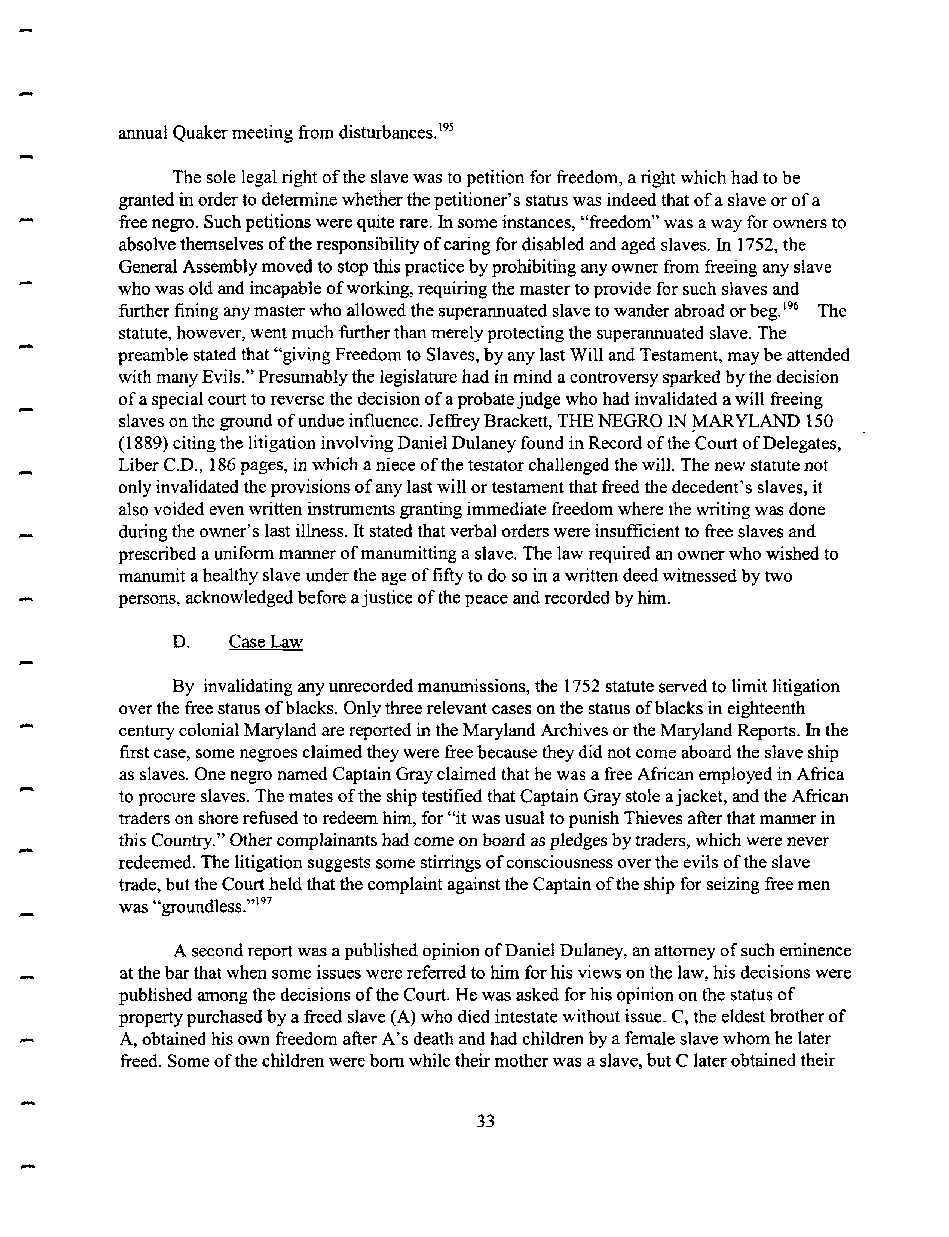|
annual Quaker meeting from disturbances.195
The sole legal right of the slave was to petition for freedom, a right which had to be
granted in order to determine whether the petitioner's status was indeed that of a slave or of a
free negro. Such petitions were quite rare. In some instances, "freedom" was a way for owners to
absolve themselves of the responsibility of caring for disabled and aged slaves. In 1752, the
General Assembly moved to stop this practice by prohibiting any owner from freeing any slave
who was old and incapable of working, requiring the master to provide for such slaves and
further fining any master who allowed the superannuated slave to wander abroad or beg.196 The
statute, however, went much further than merely protecting the superannuated slave. The
preamble stated that "giving Freedom to Slaves, by any last Will and Testament, may be attended
with many Evils." Presumably the legislature had in mind a controversy sparked by the decision
of a special court to reverse the decision of a probate judge who had invalidated a will freeing
slaves on the ground of undue influence. Jeffrey Brackett, THE NEGRO IN MARYLAND 150
(1889) citing the litigation involving Daniel Dulaney found in Record of the Court of Delegates,
Liber C.D., 186 pages, in which a niece of the testator challenged the will. The new statute not
only invalidated the provisions of any last will or testament that freed the decedent's slaves, it
also voided even written instruments granting immediate freedom where the writing was done
during the owner's last illness. It stated that verbal orders were insufficient to free slaves and
prescribed a uniform manner of manumitting a slave. The law required an owner who wished to
manumit a healthy slave under the age of fifty to do so in a written deed witnessed by two
persons, acknowledged before a justice of the peace and recorded by him.
D. Case Law
By invalidating any unrecorded manumissions, the 1752 statute served to limit litigation
over the free status of blacks. Only three relevant cases on the status of blacks in eighteenth
century colonial Maryland are reported in the Maryland Archives or the Maryland Reports. In the
first case, some negroes claimed they were free because they did not come aboard the slave ship
as slaves. One negro named Captain Gray claimed that he was a free African employed in Africa
to procure slaves. The mates of the ship testified that Captain Gray stole a jacket, and the African
traders on shore refused to redeem him, for "it was usual to punish Thieves after that manner in
this Country." Other complainants had come on board as pledges by traders, which were never
redeemed. The litigation suggests some stirrings of consciousness over the evils of the slave
trade, but the Court held that the complaint against the Captain of the ship for seizing free men
was "groundless."197
A second report was a published opinion of Daniel Dulaney, an attorney of such eminence
at the bar that when some issues were referred to him for his views on the law, his decisions were
published among the decisions of the Court. He was asked for his opinion on the status of
property purchased by a freed slave (A) who died intestate without issue. C, the eldest brother of
A, obtained his own freedom after A's death and had children by a female slave whom he later
freed. Some of the children were bom while their mother was a slave, but C later obtained their
33
�
|

